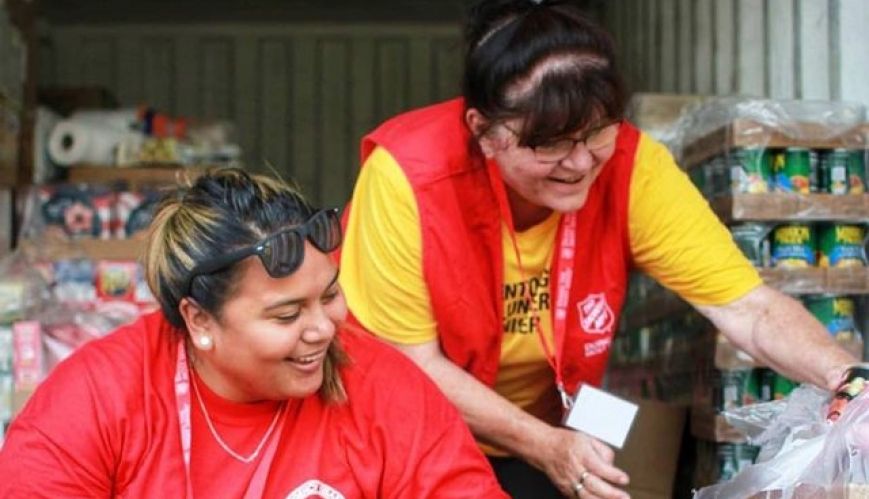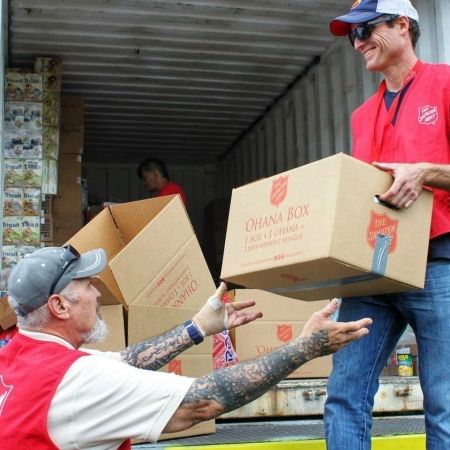Salvation Army relief efforts intensify in Hawaii

Salvation Army relief efforts intensify in Hawaii
4 June 2018
Salvation Army Emergency Disaster Services' teams have been on the ground helping with immediate and ongoing needs since Hawaii's Kilauea volcano initially exploded on 3 May.
Emergency Disaster Services personnel and volunteers from The Salvation Army are playing an increasingly vital role to those affected by the Puna lava flow since the initial explosion of Hawaii’s Kilauea volcano on 3 May.
The teams have been helping with meal coordination, hydration, and emotional and spiritual care at the shelters in Pahoa, Keaau, and Puna on the Big Island.
Serving in the midst of a sporadic disaster like a volcano can pose unique challenges, even for seasoned emergency disaster personnel.
“It [lava flow] sounds like a freight train,” said Major John Chamness, Divisional Commander for The Salvation Army Hawaiian and Pacific Islands. “It’s flowing very fast and is very dangerous.
“It’s totally different to other disasters. What makes these difficult is we don’t know if it will [continue] for weeks, months, or years.”

Major Chamness and his team oversee and staff a distribution centre in Pahoa that has been providing essential items to those in need, including breathing masks, tarps, flashlights, bottled water, and sleeping bags.
At least 51 homes have been destroyed and an estimated 2000 people have been displaced in the month since the disaster began.
While grateful to be safe, Kilauea’s unpredictable behaviour has some residents growing weary of being cooped up in a shelter for weeks as the emergency carries on with no real end in sight.
Making things worse for local residents, cruise ships have cancelled stops at major tourism posts on the island, and hotel and restaurant business has taken a major hit.
According to the Army’s Lieutenant-Colonel Joe Posillico, who’s been serving meals to those in need on the island for the past three weeks, there are five shelters, and they’re all full.
“Tensions are high,” he said. “The economic impact has been significant because people think the whole island is shut down.”
Mental health and spiritual care is a top priority for emergency disaster personnel in the midst of such a disaster given its uncertainty. Studies have shown that residents coping with volcanic eruptions and other natural disasters can face symptoms of post-traumatic stress disorder and depression with middle-aged and older adults among the most vulnerable over the long term.
“A lot of what we do is talk with the residents and listen to their stories,” Lieut-Colonel Posillico said.
He said meal delivery posed another challenge for those serving on the frontlines because there weren’t any canteens available due to the area’s remoteness. Meals must be prepared in a certified kitchen, so The Salvation Army has been contracting with or receiving donations from local restaurants.
A team of experts from other parts of the USA has arrived to assess the needs on the ground and to create a plan, led by John Berglund, Western Territorial Emergency Disaster Services Director.
Major Chamness said that, aside from the caustic nature of the gases and “vog” – volcanic smog mixed with dust – and the ongoing air quality concerns, the volcano experts are planning for a seismic event or major eruption.
The Salvation Army is working with the county, the US Federal Emergency Management Agency and the Red Cross to coordinate ongoing relief efforts and planning.
To support relief efforts, visit hawaii.salvationarmy.org